Taika Waititi: paying it forward on Thor: Ragnarok
Director Taika Waititi on the moments in Thor: Ragnarok created just for Kiwis and Aussies, and why it was important to have Indigenous attachments on set.
Australians and New Zealanders who can't tell from first glance that Thor: Ragnarok is filmed Down Under need only look a little closer.
Sure, there’s the obvious: the Marvel movie stars Chris Hemsworth, Cate Blanchett, Rachel House and Karl Urban.
But dig deeper and you’ll find woven into the very fabric of this world of superheroes and spaceships are references to the two countries (as well as a shout-out to an iconic Australian comedy… you’ll have to watch to find out). And it's in large part thanks to New Zealand director Taika Waititi – the mind behind last year’s indie hit Hunt for the Wilderpeople and Marvel’s inspired choice for this third Thor movie.
“I wanted to fill it with a few in-jokes and things for Kiwis and Australians,” he says in Sydney.
“For me anyway, it would just ground me… so while I'm making this giant Marvel movie I could look around and go, ‘that spaceship, that's painted with the Aboriginal flag colours. No one else knows that but us’. And Valkyrie's spaceship has the colours of the Tino Rangatiratanga flag.”
But while some of the design and look of Thor: Ragnarok is inspired by Australia and New Zealand, he says, “I was very careful in these design meetings.”
“You need to follow-up by saying ‘don't copy that, but use it as inspiration’, because the next thing you know you have 50 people who have appropriated all these like beautiful ancient designs without asking what they mean, or who owns them, or for any permission.”
Indigenous Australian actors such as Shari Sebbens (The Sapphires and Australia Day) and Stephen Oliver (Black Comedy), and Māori actors also came in for roles, “myself included,” Waititi says – referring to his scene-stealing CGI character Korg.
“So there's lots of little things that would just, for me, help make it actually a true Australian film rather than, ‘oh they just shot a movie in Australia’,” he says.
 Taika Waititi on the Thor: Ragnarok set
Taika Waititi on the Thor: Ragnarok set
Another part of that was bringing Indigenous interns onto the set at Village Roadshow Studios on the Gold Coast. Funded by Screen Australia’s Indigenous Department, these eight attachments were able to join different departments during production – from stunts to set design to shadowing Waititi himself.
It's something Waititi suggested to Marvel producer Brad Winderbaum some five months before the shoot kicked off, when they were discussing who would make up the crew.
“I just said to Brad, whenever I do my films I make sure we try to get any locals who might be interested in the film industry to come in and get some work experience, or just to sit around on set and see how it's done,” he says. “Because I never had that opportunity when I was a kid.”
Waititi didn’t go to film school, instead educating himself by watching movies, making his own short films “and through trial and error – a lot of error sometimes too.”
Cate Blanchett and Taika Waititi
He was nominated for an Academy Award in 2005 for his short film Two Cars, One Night, and went on to direct beloved hits such as Boy, vampire mockumentary What We Do in the Shadows and aforementioned Hunt for the Wilderpeople, which is the highest grossing New Zealand feature in the country’s history.
“I love going to visit other people’s sets,” Waititi says. “Just sitting there and watching how other directors work. So I think for those guys (attachments) it was a really good opportunity to see how one of these giant sets operates.”
It also gave them an opportunity to see Waititi in action.
“Less how I work in that big machine and more how I work with actors, or how I improvise, or make stuff up, or rewrite things. So that was really nice for me to be able to help support them,” he says.
Indeed, from speaking with the interns it's one of the things that crops up most – Waititi’s energy on set. Cornel Ozies, who was a director’s attachment, talks about how Waititi would keep everyone motivated and set the tone.
“When he was high energy, everyone followed his lead. He would involve the crew in simple ways, like… in-between takes, when trucks are moving lights around, he’d have a PA blasting personal music requests, so the crew was dancing and working to music that they love,” he says.
“Between takes we’d talk about his culture, my culture, stories, mythology, music. It was just stuff that takes that pressure off, because he’s got people coming at him saying ‘do you want this colour pink on this arm’ or ‘this colour red on that set’…
“Then there were moments where he would break down why he made choices. He’d pull up and explain maybe a situation from previous experiences that he had on other sets and what he’s learnt, and just impart that knowledge.
Waititi says about filming in Australia, “it was really all about just doing things right.” So on 4 July 2016, the first day of production, the traditional owners of the land performed a Welcome to Country.
“You wouldn't really start a movie in New Zealand without asking the local tribe to come in and bless you and send you to work with some good mojo. Especially if you're on their land, you're in their backyard it's sort of just nice manners to get in touch…
“And the studio were very receptive (and) jumped on board, so we got some locals from the Yugambeh mob, they came in and welcomed us. And one of our Kaumātua (a Māori elder), came over to do a Karakia, a kind of open-up ceremony from my side of things as well.
“Because it really felt like two nations coming together and making this thing.”
See this collaboration on screen when Thor: Ragnarok releases in Australian cinemas on 26 October through The Walt Disney Company.
THE ATTACHMENTS AND SOME OF THEIR TAKEAWAYS
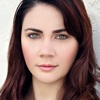
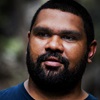

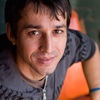
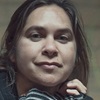
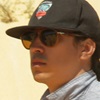
Shari Sebbens, Director’s Attachment | Cornel Ozies, Director’s Attachment | Kodie Bedford, Stunt Department | Benjamin Southwell, Assistant Director’s Department | Tracey Rigney, Assistant Director’s Department | Perun Bonser, 2nd Unit
Shari Sebbens – Director’s Attachment
“It was a thrill and a dream come true to witness an Indigenous brother work on a Hollywood blockbuster, a fierce reminder that our ancestors have given us a great gift, but it is up to us to educate and challenge ourselves to be the best storytellers we can be, which is what I endeavour to do from here out.” Sebbens acted in Thor: Ragnarok as well.
Cornel Ozies – Director’s Attachment
“It was an invaluable experience. I don’t know how to talk about it in any other way. It was an eye opener. I’ve idolised this guy’s work so then being able to sit with him and be on set, shoulder-to-shoulder, is just an amazing experience.
“It’s helped me understand the higher end of production. Now I feel a bit more well-rounded and understand how things work, how you keep to a schedule, how you adjust, how you be flexible, so that hopefully when I get to direct my bigger films it’s not so overwhelming.
“The DoP Javier Aguirresarobe, when he found out I was a cinematographer, he came over and introduced himself and I had these wonderful moments, when Taika had these intense conversations Javier would take me over and explain how they’re going to get this shot, how the special effects worked and how they planned, so even though I was doing the director’s attachment I still got to learn from the camera crew as well.”
Kodie Bedford – Stunt Department
“I was basically learning how a Hollywood film works really. I’ve been on a lot of TV sets or short film sets and this just blew my mind. I was just really excited because Taika Waititi is one of my favourite filmmakers and of course he’s Māori, so seeing the diversity behind the scenes, (and) to be part of that diverse crew inspired me – that people of minorities can be at that level and make great projects and films and stories.
“(Stunts) was just so much fun. It’s like a production in itself, the way the stunts operate. They get the script, they choreograph a fight scene, film it, edit it, then send it to the director and if there’s changes, it comes back. It was like being on a mini set within a big set.
“I got thrown into and shown into what happens. And I really do have [stunt co-ordinator] Ben Cook and [stunt department supervisor] Hayley Saywell to thank for that because they really respected me and the job I could do. They helped me understand the processes and took me though how they do the budgets of the stunts, and how they time things and put things together. They were really generous.”
Benjamin Southwell – Assistant Director’s Department
“I ended up in the AD department, working day-to-day on set (with) all the general AD kind of duties: looking after actors, answering questions on set about what’s happening, relay a lot of information, lock the stages down while we’re shooting, calling ‘rolling’ and things like that.
“The biggest thing for me was just seeing how it all worked. I could see myself doing that. Obviously I have a little way to go, but that it’s something I could handle as a director or even just working in the AD’s department. You don’t really know what to expect before you walk on a big set like that. And then to understand it’s not as daunting as you think and there’s a process to everything and those processes are very similar to the type of things that you do, even though they’re on a smaller scale.
“Obviously there was lighting and visual effects and a lot of craft technical stuff that I picked up as well. But generally it was that self-confidence of knowing that I could be there one day.”
Tracey Rigney – Assistant Director’s Department
“It was awesome being in the AD department, because I got to be on set, so I got to be close to the actors and to Taika and observe a lot. And talking to all the different departments while giving out all sheets and things like that. I loved it.
“I got to learn just what it takes to make a mega movie like Thor. All the studio, everything was taken up with Thor. I could not believe all the sound stages were for the movie. I got to walk past all of these people, who were in art department, doing props, bumping in a certain set or bumping out a set from a soundstage that they wrapped last week on. It was a big eye-opener for me to see what goes into it and also how actors work. One day the 3rd AD got me to sit behind the DoP, and just watch how he worked as well.”
Perun Bonser – 2nd Unit
“The take-aways were how there’s not really any secret science or technique that goes into being a good director. Taika’s an excellent communicator from what I saw. He’s got experience in making his own films but he’s also an experienced actor which allows him to communicate with other actors quite well.
“Lighting is super important. A lot of the set, seeing it in person, it’s made out of chipboard and cheap, practical building materials, but with the correct lighting it looks like aged bronze and polished marble so I think lighting’s pretty important.
“It stripped away all that romanticism you have with making a film. It’s not particularly glamourous and how you imagined. It doesn’t vary that much from making a short film. The biggest differences are the budget just scales up the process. It’s pretty much the same.”
There were also two other attachments: Mitchell Stanley (Set Decoration) and Dena Curtis (Production Office).

What to read next
Thor: Ragnarok producer Brad Winderbaum on the challenges of creating a Marvel movie in two years and if they will shoot in Australia again.
20 Oct 2017
Caris Bizzaca